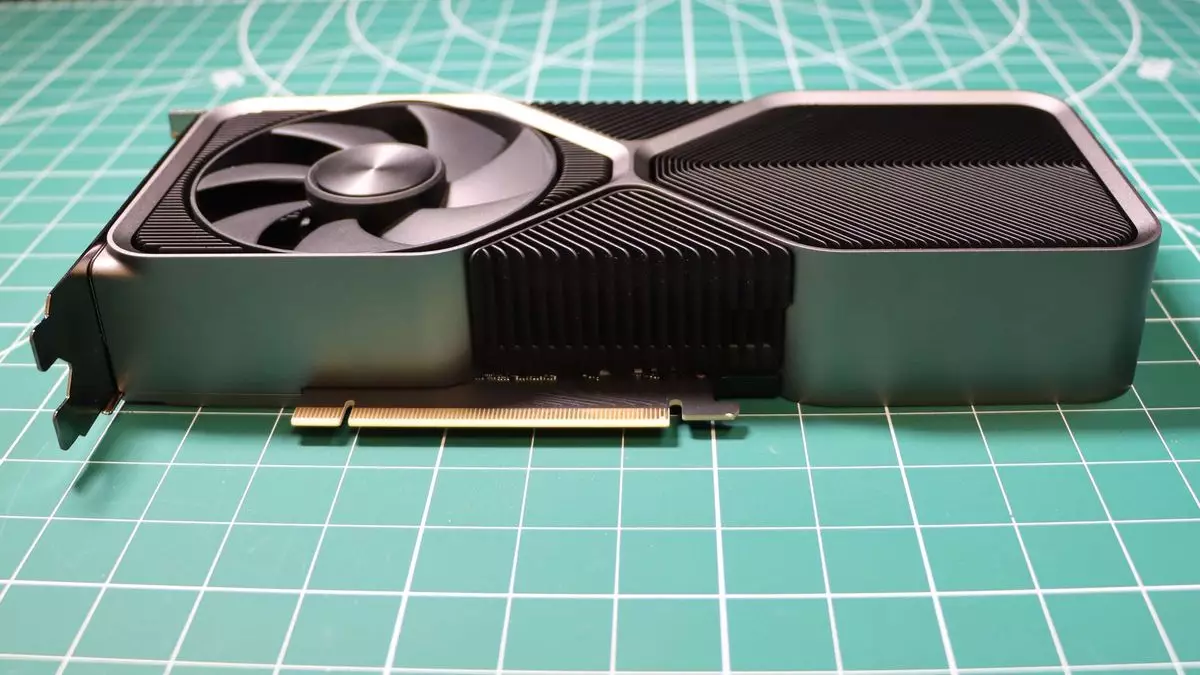As the tech community eagerly anticipates Nvidia’s latest advancements in graphics processing units (GPUs), recent leaks have provided a tantalizing glimpse into the upcoming lineup. Although these revelations may not represent groundbreaking information, they do align closely with long-standing rumors regarding the RTX 5090 series. According to a slip on Zotac’s website, enthusiasts can expect the RTX 5090, featuring an impressive 32GB of VRAM and a staggering array of CUDA cores, among other variants in the new series.
The standout feature of the RTX 5090 is its extraordinary 32GB VRAM, combined with a robust 512-bit bus, which positions it as a formidable contender in high-performance gaming and professional graphics applications. With an expected 21,760 CUDA cores, this GPU dwarfs its predecessor, the RTX 4090, which boasts 16,384 CUDA cores. This leap in core count suggests that the 5090 will not only outperform previous models but could redefine what users expect from high-end graphics cards.
Such numbers evoke excitement; however, they may come with a hefty price tag. The introduction of advanced technology usually leads to significant increases in cost, as Nvidia aims to cater to an audience that demands high performance while navigating the competitive landscape of GPU offerings. The expectation is for the RTX 5090 to be a “goliath” in both performance and cost, leaving many to wonder about the viability of this investment for everyday users versus professional creatives and gamers.
Beyond the flagship RTX 5090, Nvidia’s roadmap includes several other models – the rumored RTX 5080, RTX 5070 Ti, and RTX 5070. The RTX 5080, for instance, is expected to feature 10,752 CUDA cores, improving upon the 4080’s specifications. However, this advancement seems relatively modest compared to the jump expected from the 4090 to the 5090, raising questions about the balance of pricing and performance across the series. Staying at 16GB of VRAM may not be sufficient for users increasingly favoring high-resolution gaming paired with advanced graphical options like ray-tracing.
Conversely, the lower-tier options, such as the RTX 5070 and 5070 Ti, present more of a challenge for consumers. They are rumored to come equipped with 6,400 and 8,960 CUDA cores, respectively. While these specifications move slightly forward from previous generations, the perceived stagnation in VRAM and overall performance may frustrate gamers and creators, especially as more current titles demand greater resources.
As the CES 2024 approaches, excitement surrounding Nvidia’s potential unveilings is palpable. The recent leaks suggest that we may see the first of these new Blackwell-generation GPUs making their debut, reinforcing a growing narrative that Nvidia aims to dominate the upcoming graphics landscape. This anticipation is fueled by confidence in high-profile endorsements, potentially catalyzing a fresh wave of consumer interest.
Yet, many within the gaming community are left pondering the implications of Nvidia’s strategies that may prioritize high-end functionalities at the expense of broader accessibility. The unmentioned RTX 5060, rumored to remain at 8GB of VRAM, indicates a troubling trend in GPU developments — leaving entry-level gamers with GPUs that may not suffice for even moderate gaming experiences. This decision might alienate a significant portion of the consumer base, particularly as game requirements continue to evolve rapidly.
While Nvidia is undoubtedly poised for a substantial rollout in its RTX 5000 series, the implications of its architectural enhancements, pricing, and VRAM limitations urge manufacturers to reconsider the evolving needs of gamers. As consumers await official confirmations that may reshape expectations, it becomes increasingly important for Nvidia to strike a balance between delivering cutting-edge technology and ensuring that its innovations support a diverse array of users—from casual gamers to hardcore enthusiasts. The narrative surrounding the RTX 5000 series invites both excitement for what is to come and critical reflection on how these developments will affect the gaming landscape in the months ahead.

